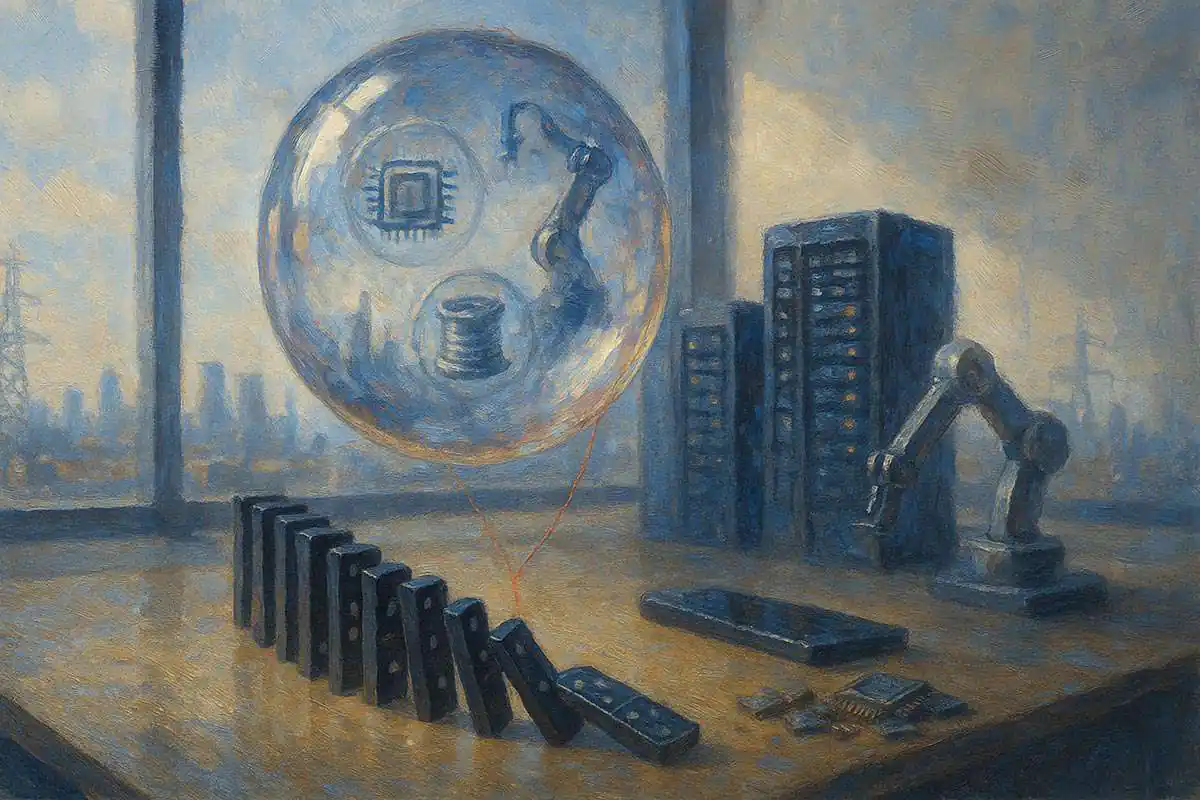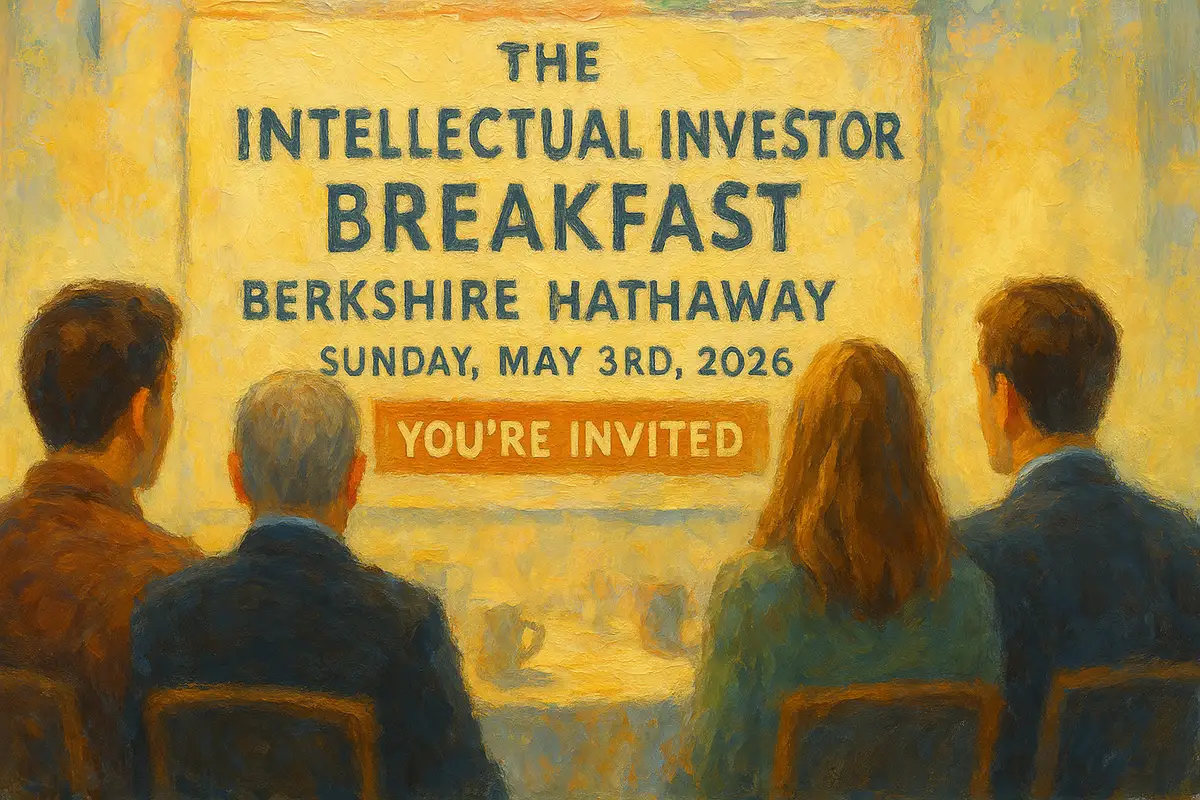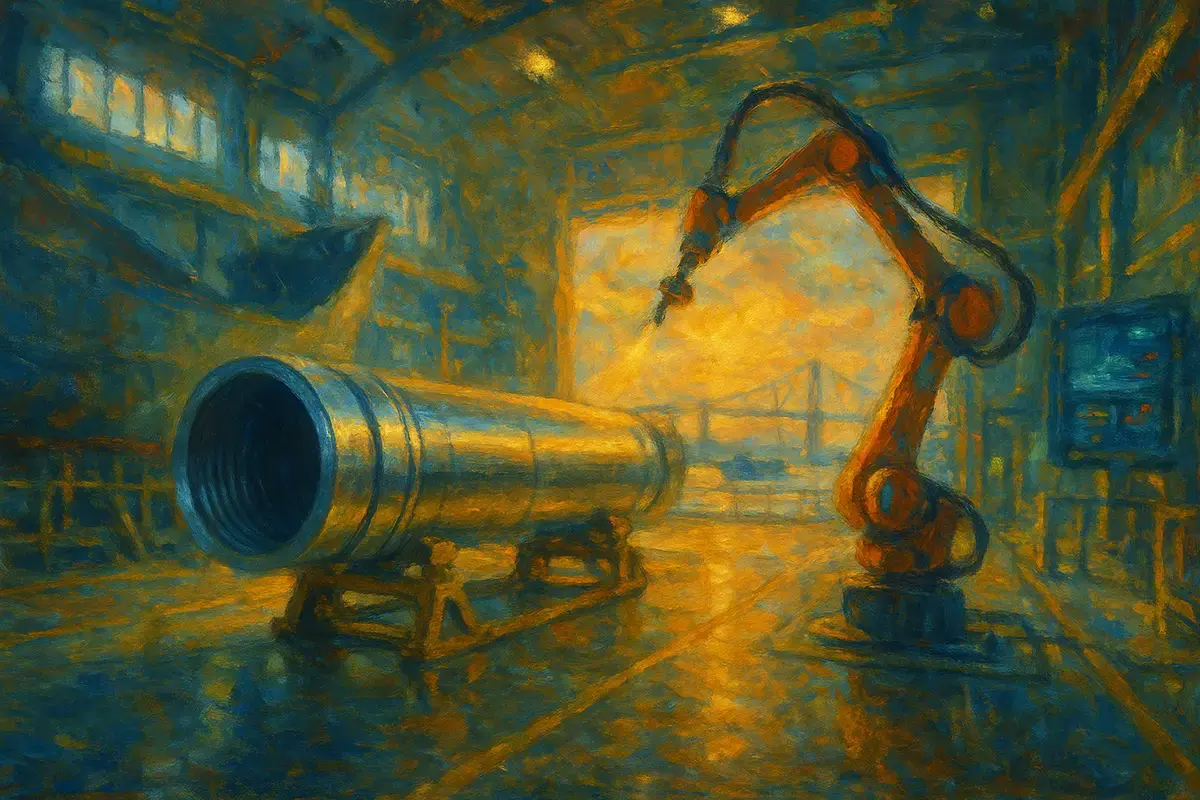Bubbles don’t form out of thin air. They arise from stories that feel real and transformative—narratives that capture our imagination and hint at a world-changing future. The more real and compelling the narrative, the bigger the bubble.
There’s always some truth beneath the hype. That doesn’t mean what’s happening in AI isn’t real—it absolutely is. The question is: What impact will it have? How much value will be created? In the end, it’s a math problem: How much will these companies earn in the future versus what investors are paying for them today?
We have no idea. Nobody does.
To understand where we’re headed, let’s look back at the late 1990s—the height of the dot-com bubble. The internet was going to change the world, and it did. That’s a fact. During the bubble, internet stocks soared. Then they crashed.
Some, like Amazon, truly did change the world. If you’d bought Amazon in 1999 and endured a 95% decline, holding on through years of losses, you’d still have done incredibly well. But human psychology makes that nearly impossible; very few who bought at the peak held through that drawdown and waited 10–15 years to see meaningful gains.
For every Amazon, there were hundreds of companies that soared and then disappeared into the dot-com graveyard—names like CMGI and JDS Uniphase, celebrities of their day that are barely remembered now.
The parallels to today are striking. In 1999, it was hard to imagine another company displacing Yahoo! as the internet’s dominant search engine. Yahoo! was the “Google” before Google, until a small startup came out of nowhere and dethroned it.
OpenAI could become the winner—or it could become another Yahoo!.
That’s the challenge: It’s almost impossible to identify the winners ahead of a revolution. As investors, we must maintain humility. No matter how confident people sound, nobody truly knows. That’s the first point.
The second is that we tend to overestimate what a new technology will do in the short term and underestimate what it will do in the long term. Most likely, AI on its own won’t be as powerful as it will be when combined with other technologies.
Consider how the internet’s first wave of transformation didn’t become a tsunami until the smartphone arrived. The smartphone was the accelerant, propelling internet adoption and creating entirely new industries. Uber, for instance, exists only because the smartphone and the internet came together. In a similar way, robotics may become the catalyst for AI; its true potential will unfold as it fuses with other technologies.
Beyond these conceptual concerns, the actual deals happening today have dot-com overtones. Oracle committed to spending $300 billion on data centers for OpenAI, which in turn promised to pay Oracle $60 billion a year. Oracle’s stock skyrocketed. Larry Ellison became the second richest person in the world.
But this is just the beginning.
Pause to process the magnitude of these numbers—commitments of hundreds of billions of dollars. They’re unfathomable.
Then the plot thickens. Nvidia invested in OpenAI, which will use that money to buy Nvidia chips. OpenAI also invested in AMD and will be buying AMD chips, too. I know money is fungible, but you could argue that Nvidia is helping finance OpenAI’s purchase of competing AMD chips.
OpenAI is the connecting link in a chain of neatly stacked dominoes. There’s so much dependency here, and it all comes down to one thing: profitability.
OpenAI is losing billions of dollars today. It needs to generate hundreds of billions in annual revenue within a few years for these dominoes not to come crashing down.
Let’s come back to Oracle. It’s a financially strong company, but it doesn’t have $300 billion sitting under a cushion. It will be borrowing much of this money to build these data centers; and unlike its core software business, this new adventure promises to generate very low margins.
This reminds me of the late ’90s, when Lucent and Nortel financed money-losing dot-coms. When the market crashed and the dot-coms ran out of cheap capital, these two Wall Street darlings were obliterated.
But things may get a lot hotter before they cool.
OpenAI is in the lead today, but Meta, Google, xAI, Microsoft, and others see this new arms race as existential. For them, economics goes out the window—it’s a race for survival. Each company is behaving rationally in isolation, trying to mitigate the threat of a competitor owning a smarter AI that could turn them into a pumpkin at midnight.
But collectively, this will likely lead to tremendous overcapacity—too many data centers and too much compute built in the short term.
Here’s what’s changed: Until this point, the data center arms race was financed by the cash flows on the Magnificent 7’s balance sheets. Oracle has taken us into a new, levered arms race. Once you introduce significant debt into the ecosystem, it becomes more fragile, more path-dependent, and more sensitive to external events like recessions, interest rates, and geopolitics.
Timing becomes critical—the difference between OpenAI achieving profitability in five years versus three could be catastrophic.
History is full of examples, from railroads in 19th-century Europe to the fiber optic buildout I lived through. In that case, US infrastructure was built on the backs of debt and equity investors who lost hundreds of billions of dollars.
This is what makes this country great—people are allowed to take risks and are allowed to fail. Sometimes both investors and consumers win. Sometimes, only consumers win.
Not all of this infrastructure investment will be useful decades from now. Most of the money today is going to three things: data centers, AI chips, and power generation.
The investment in power is arguably a net positive, as the US desperately needs an upgrade to its electric grid. This AI boom will help, creating pressure to develop new electricity generation and improve our grid, hopefully pushing for modular nuclear reactors, battery technology, and fossil fuels.
In contrast, while data centers themselves can last for decades, those built with unconstrained capital in a race to be first are vulnerable to inflated costs. Future data centers will likely be built for a fraction of today’s price, making these early facilities less competitive.
The biggest malinvestment, however, will likely be in AI chips. They have a useful life of only a few years, as Nvidia’s business model depends on making today’s hardware obsolete with faster, more efficient models. This rapid obsolescence is compounded by Nvidia’s pricing—it enjoys software-like margins because it’s the only game in town, allowing it to price its chips at exorbitant levels.
The bulk of today’s capital is pouring into this rapidly depreciating hardware.
I’ve seen projections that AI infrastructure investment will hit a few trillion dollars by the end of the decade. For a 15–20% return on that capital, these companies would need to generate several trillion dollars in new annual revenue—roughly the size of the entire US and European car industry combined.
And here’s the kicker: When Level 3 and Qwest were laying fiber, projections claimed the appetite for it was insatiable. But then the technology improved, and today we still have an overabundance of fiber. As China’s DeepSeek showed us, there is a risk that future models will require less of everything, including compute and power.
Something interesting happens during bull markets—certain stocks become untouchable. They can do no wrong; every move is interpreted as if their CEO is some Machiavellian Magnus Carlsen, seeing ten steps ahead. These stocks only go up.
Nortel, Lucent, JDS Uniphase—they were stocks you had to own. I don’t remember their CEOs signing women’s breasts with a Sharpie, as Jensen Huang does today, but this was before social media. They had that same aura of invincibility.
This brings me to my advice for investors.
Let me tell you a secret about investing. You get to choose the game you play. You can observe and be entertained by the AI game transpiring before your eyes, but you don’t have to play it. You can simply be honest with yourself and say, “This is too difficult. I just don’t know.”
And here’s the truth—nobody knows. Not even Sam Altman, who might be brilliant but doesn’t have a crystal ball, no matter how confident he sounds. Big breakthroughs are built by delirious optimists like him. It’s his job to sound confident. His company is burning through cash, and he’s in two businesses: building models and raising money. He has been excellent at both.
But this doesn’t mean investors in OpenAI or other AI stocks will make money.
Instead, you can focus on the thousands of other companies out there and find value. They don’t have to be connected to AI—though they may be beneficiaries of it—but you also need to be paranoid enough to ensure they won’t be destroyed by it.
Key takeaways
- Bubbles form around powerful stories, and investing in AI is no different—truth and hype often coexist.
- Predicting winners in revolutions is nearly impossible; humility is an investor’s best defense.
- AI’s long-term impact may come from its fusion with other technologies, like robotics or energy.
- Today’s AI boom mirrors the dot-com era—huge spending, leverage, and overconfidence.
- Smart investors don’t have to play the AI game; there are plenty of great businesses outside the arms race.









In general I think a balanced review, but your comment “… pressure to develop new electricity generation and improve our grid, hopefully pushing for modular nuclear reactors, battery technology, and fossil fuels.” leaves me somewhat confused. I shows more a belief system more than a studied analysis. The main benefits of batteries are to provide supply shifting and the ancillary services needed for intermittent renewables. So without renewables, why build batteries? And, even if you have been caught up in the apparent US countrywide mass delusion that climate change is some sort of global conspiracy by scientists, surely you, who look at the broad picture, should see that any form of power generation that needs a fuel of some sort must lose out on cost to a generation system that uses no fuel such as wind and solar. Except for niche cases, the only exceptions would be if the fuel using generator has a much lower capital cost and running cost, or can be implemented faster. So this definitely rules any form of nuclear out on both criteria. Fossil fuel generation can be implemented faster than nuclear, but still not faster than solar + batteries. And capital costs are not cheaper. And remember also that the fuel supply chain still has to be developed. For instance the Terrapower Natrium reactor was delayed due to fuel supply issues.
I’ll take the other side of this bet! While I can’t see the future better than anyone else, I will place my faith in the advancement of AI towards something remarkably useful (and revenue-generating). Yep, I am expecting some nasty pull-backs along the way, but an over-sized long position in semiconductors is how I am positioned.
Factual note: Nvidia isn’t investing in OpenAI to fund its spending. It’s the other way around—OpenAI is buying Nvidia chips to build its data-center infrastructure; if anything, Nvidia also has the option to invest in OpenAI. Net effect: cash-positive for Nvidia.
As always very valuable insights.
Thank you for sharing 🙏🏼
So well put. Thank you, Vitaliy.
as usual, a great read and full of solid advice. How about your replies to clients who really, really want to jump into the ones “who will survive?”
Mildly nitpicky, but Yahoo wasn’t actually a search engine(though it later bought one).
Lycos was actually the first search engine, held the patent on search spiders with CMU.
I think Cisco and Lucent are the most apt comparisons here. They seller-financed equipment to venture-backed companies with no real business besides raising new rounds. When the music stopped, they had huge writeoffs and all that equipment hit the secondary market for pennies on the dollar.
Just like we had an overhang of “dark fiber” back then, I think we will have “dark data centers” in the coming years. And nvda chips on the secondary market. Additionally, nvda has a significant risk from a potential Chinese invasion of Taiwan.
It’s priced for perfection, and perfection rarely persists.
Wise advice. Makes me remember something I read decades ago from an investment pro who had been in the market for around sixty years: “Nobody knows nothing”. I always recall this when tempted by the latest new thing in investments.
Great post! It does feel like Y2K in a way.
The technology is transformative in my eyes. I have written a bit more about it here. https://arturoh.substack.com/p/why-i-havent-left?r=2lkd10
But the scale and investment is a bit over the top.
Do you think companies will find a way to scale down the cost? Or, alternatively, will they abandon ship and lead to a crash the moment AI does not meet the overly high expectations and evalutions?